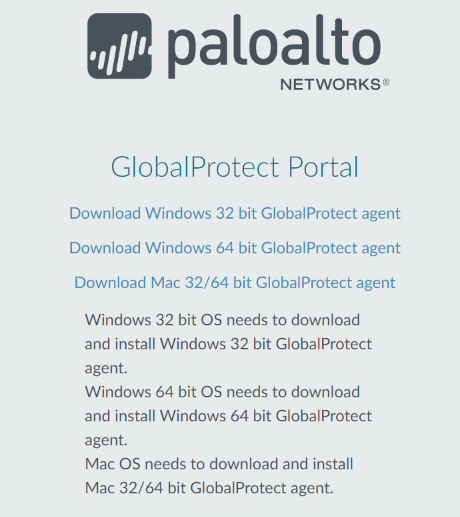

- #Globalprotect multi factor authentication install#
- #Globalprotect multi factor authentication software#
- #Globalprotect multi factor authentication Pc#
To add a RADIUS server, in the Servers section, click Add. From the Authentication Protocol drop-down list, select PAP. In our example, we name this profile AuthPointGateway. In the Profile Name text box, type a name. The RADIUS Server Profile window appears. From the navigation menu, select Service Profiles > RADIUS. From the Max Version drop-down list, select Max. From the Min Version drop-down list, select TLSV1.0. In our example, this is the Server-cert certificate. From the Certificate drop-down list, select the second certificate that you created. In our example, we name the profile AuthPoint SSL Profile. The SSL/TLS Service Profile window appears. From the navigation menu, select Certificate Management > SSL/TSL Service Profile. Export the two certificates that are created. In our example, we select the Root-cert certificate that we created. From the Signed By drop-down list, select the certificate you created. In the Common Name text box, type external interface IP address of the Firebox. In our example, we name this certificate Server-cert. In the Certificate Name text box, type a name. Click Generate to create another certificate. In the Certificate Attributes section, click Add and add Country and Organization certificate attribute values. Select the Certificate Authority check box. In the Common Name text box, type a name. In our example, we name this certificate Root-cert. From the navigation menu, select Certificate Management > Certificates. For more information, see About Gateways. #Globalprotect multi factor authentication install#
We recommend that you install the AuthPoint Gateway. A token is assigned to a user in AuthPoint.
#Globalprotect multi factor authentication Pc#
You have installed the Palo Alto GlobalProtect in your client PC. You have finished the initialization configure of Palo Alto PA-220. This diagram shows an overview of the configuration required for RADIUS authentication.īefore you begin these procedures, make sure that: Palo Alto Configuration for RADIUS AuthenticationĪuthPoint communicates with various cloud-based services and service providers with the RADIUS protocol. #Globalprotect multi factor authentication software#
NOTE: If you need a resource for testing, there are plenty of test SSH servers available publicly.The hardware and software used in this guide include:.Navigate to Policies > Authentication > Add to create an authentication rule.Set the Authentication Profile to the MFA profile that was previously created.Set the Authentication Method to web-form.Navigate to Objects > Authentication > Add to create a new Authentication Enforcement.Set Trusted MFA Gateways to the IP address referenced in your Captive Portal along with port 6082Ĭonfig App Tab App to Configurations Parameters.Set Enable Inbound Authentication Prompts from MFA Prompts (UDP) to Yes.Set Connect Method to User-logon (Always On).Navigate to Network > GlobalProtect > Portals > select the previously configured portal > Agent > select the previously configured config > App > and change the following App Configurations parameters.In my case, its the IP address of my trust interfaceĬaptive Portal window to Enable Captive Portal.Set the Redirect Host to an IP address of an interface on the firewall.Select the SSL/TLS Service Profile and Authentication Profile that were previously created.Navigate to Device > User Identification > Captive Portal and click on the gear icon.On the Advanced tab, select the user group previously created to add to the Allow List.Add the Multi-Factor Authentication Server Profile that was previously created as part of your DUO setup.Check the Enable Additional Authentication Factors box.Enter a Login Attribute of sAMAccountNameĪuthentication Profile to Set User Domain.
 Navigate to Device > Authentication Profile > Add to create a new profile that consists of the LDAP and DUO Server Profiles that were previously created. Navigate to Device > Certificate Management > SSL/TLS Service Profile > Add to create a profile that references the root CA created previously. You have already followed the previous articles in this seriesĪlthough this capability can be configured without GlobalProtect for HTTP applications, we are going to focus on non-HTTP applications to highlight the GlobalProtect app's role in the authentication prompt process. NOTE: This article assumes the following:
Navigate to Device > Authentication Profile > Add to create a new profile that consists of the LDAP and DUO Server Profiles that were previously created. Navigate to Device > Certificate Management > SSL/TLS Service Profile > Add to create a profile that references the root CA created previously. You have already followed the previous articles in this seriesĪlthough this capability can be configured without GlobalProtect for HTTP applications, we are going to focus on non-HTTP applications to highlight the GlobalProtect app's role in the authentication prompt process. NOTE: This article assumes the following:






 0 kommentar(er)
0 kommentar(er)
